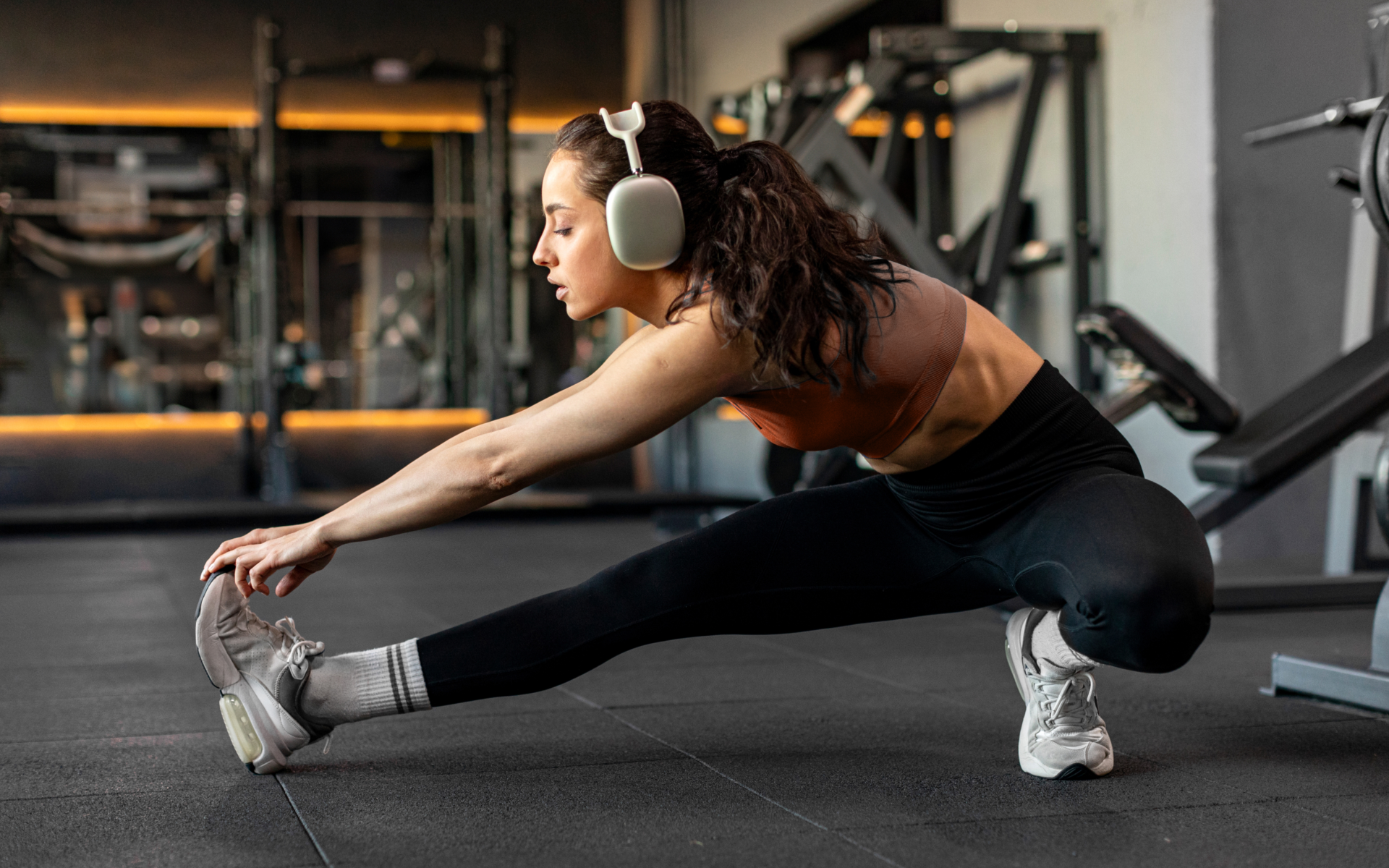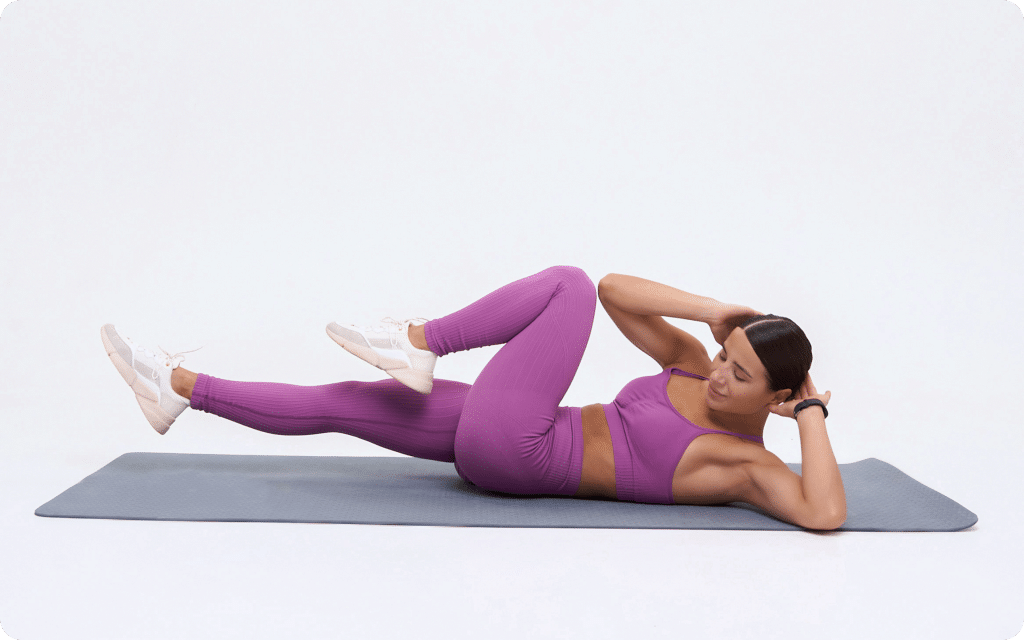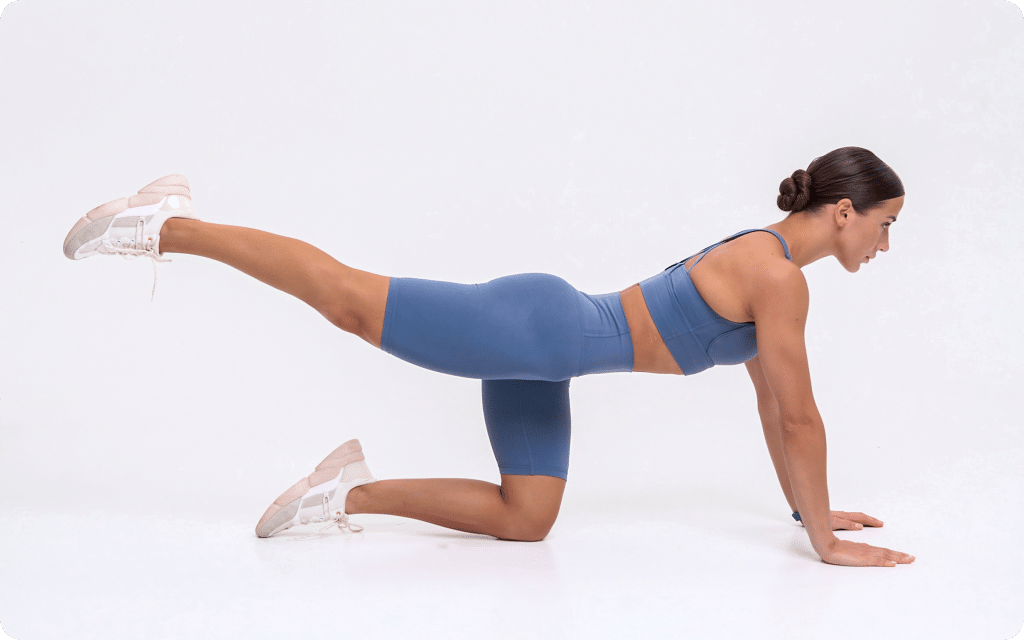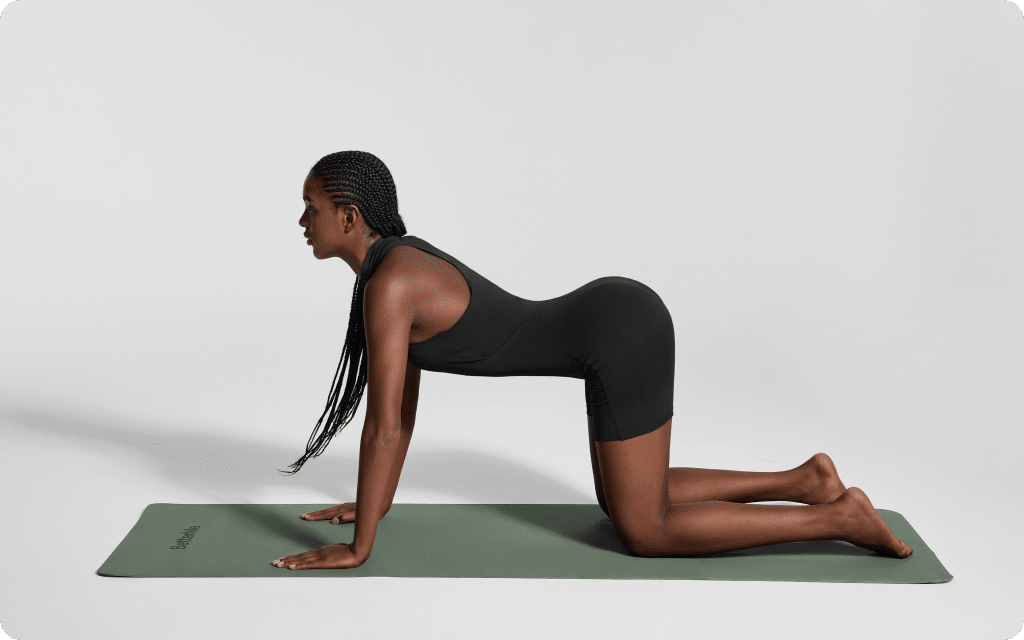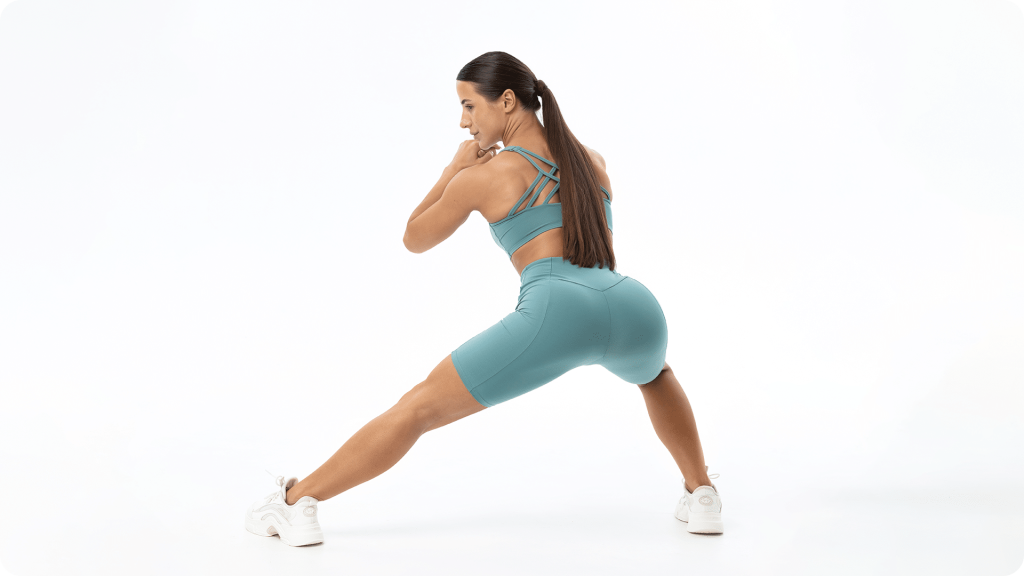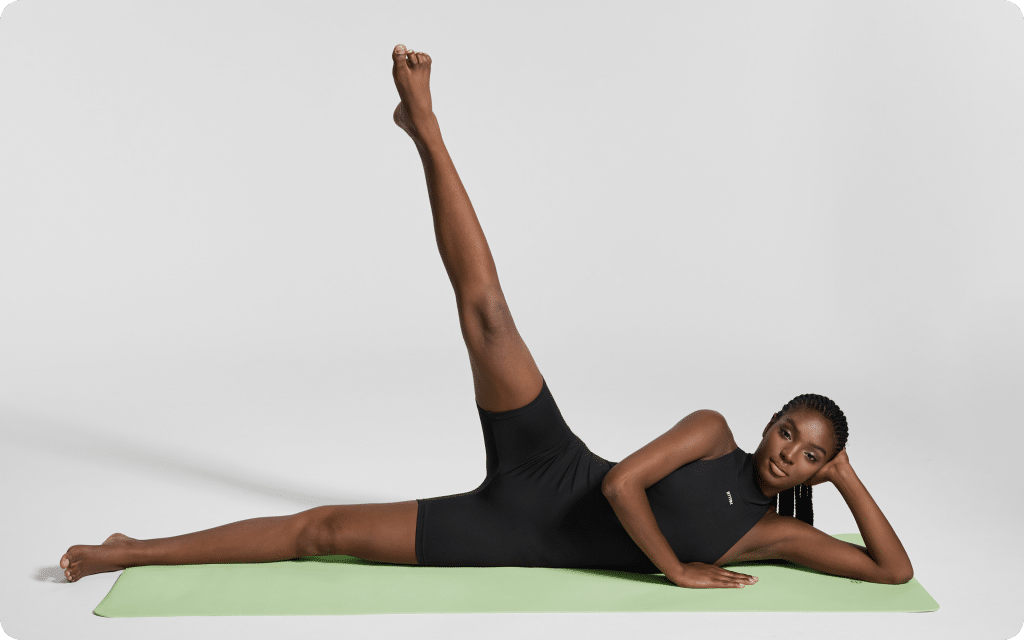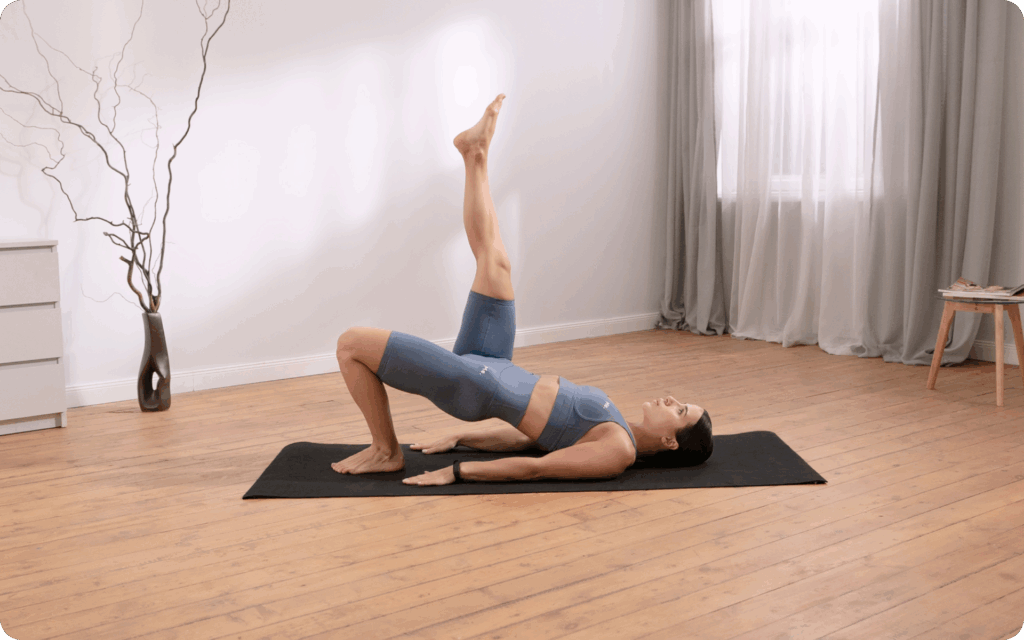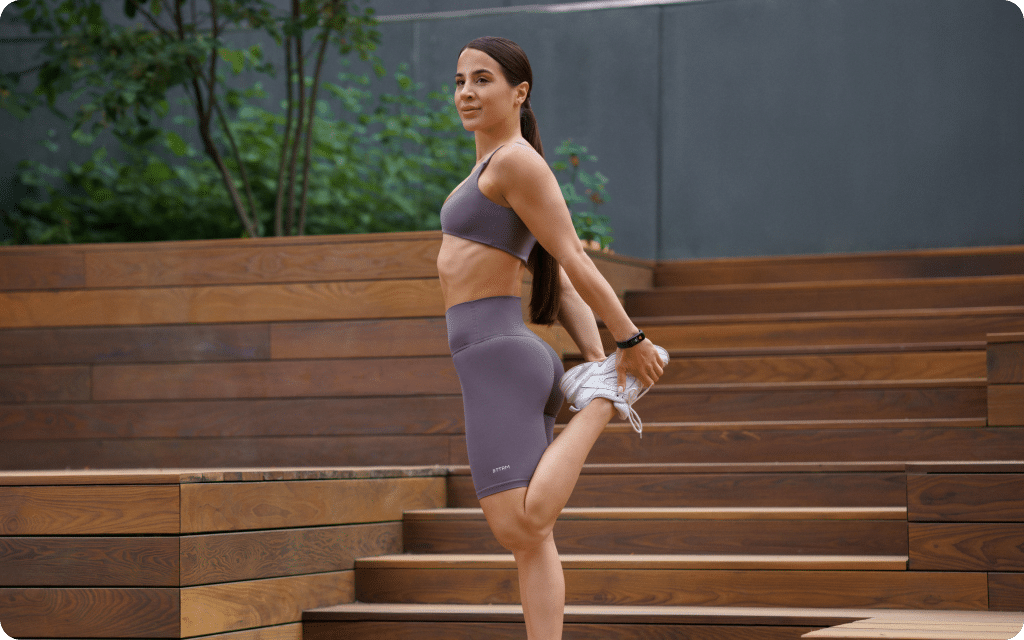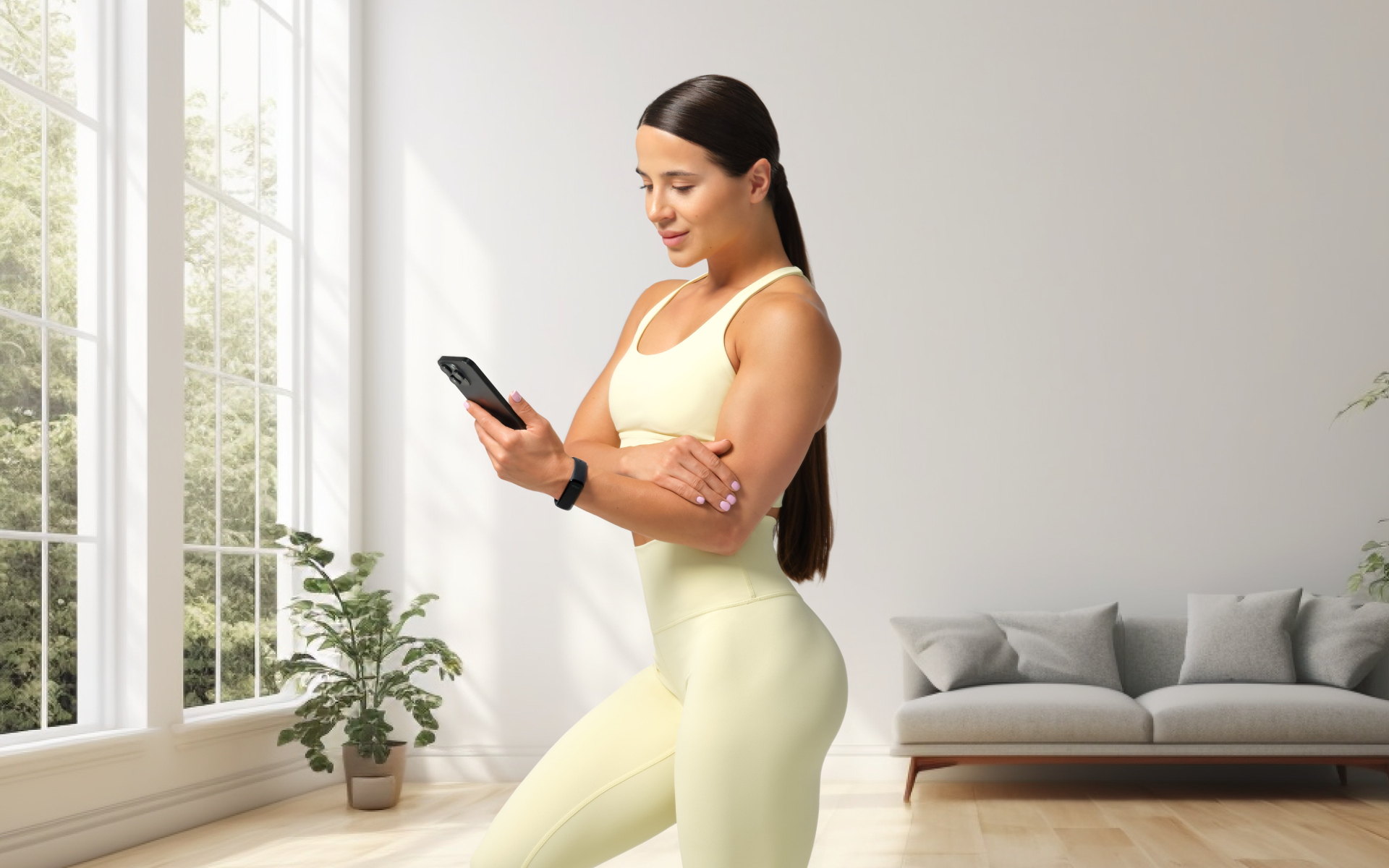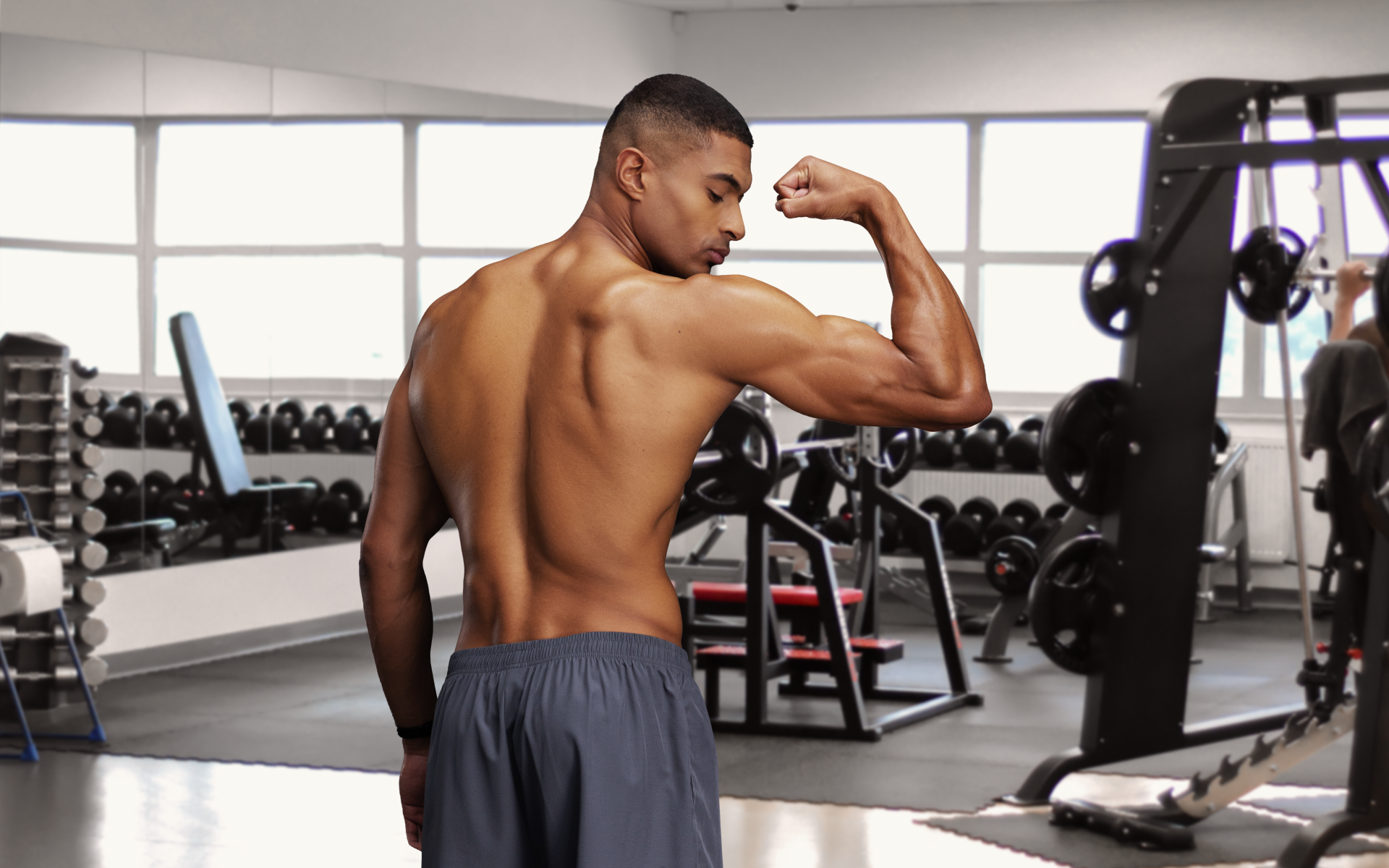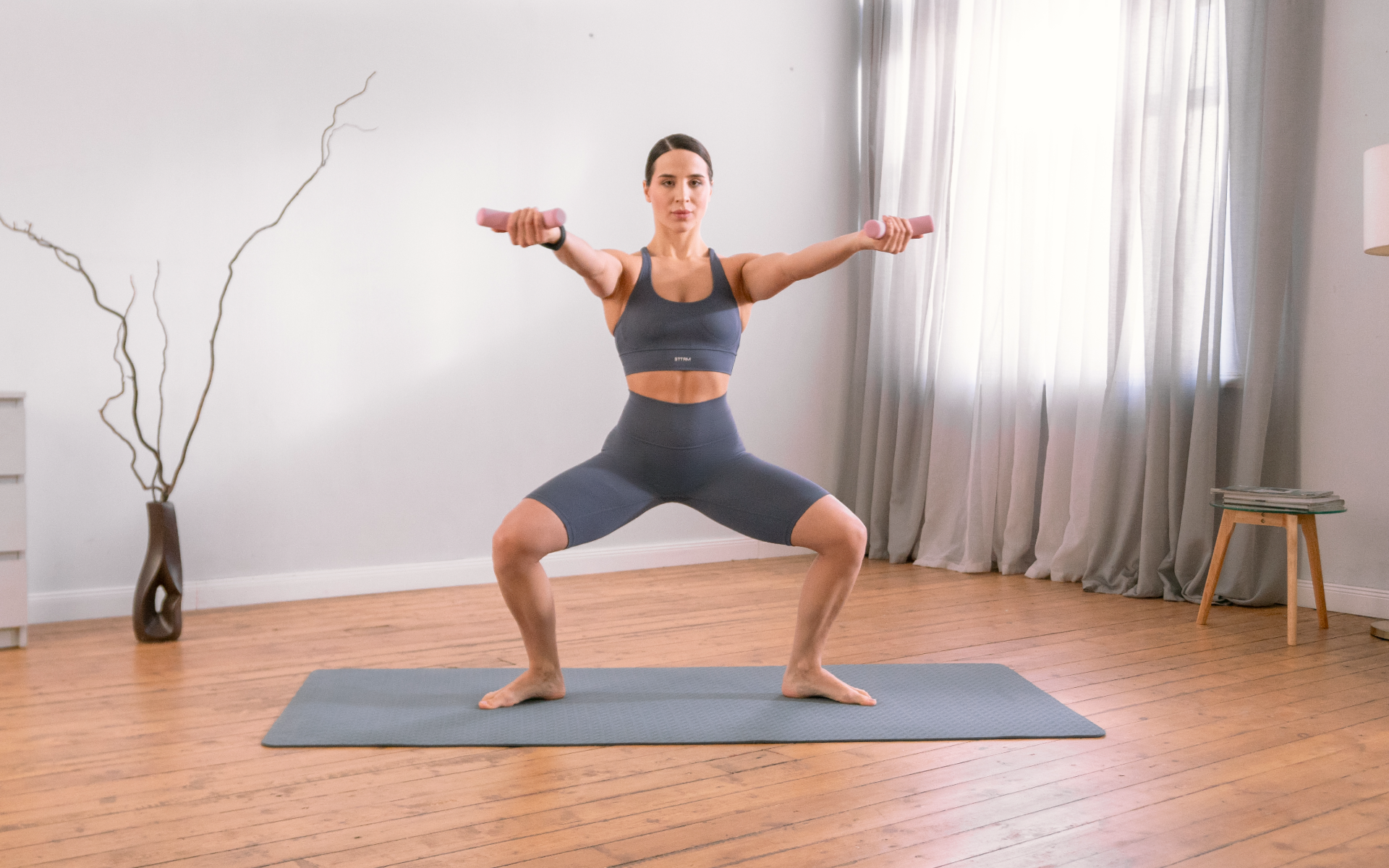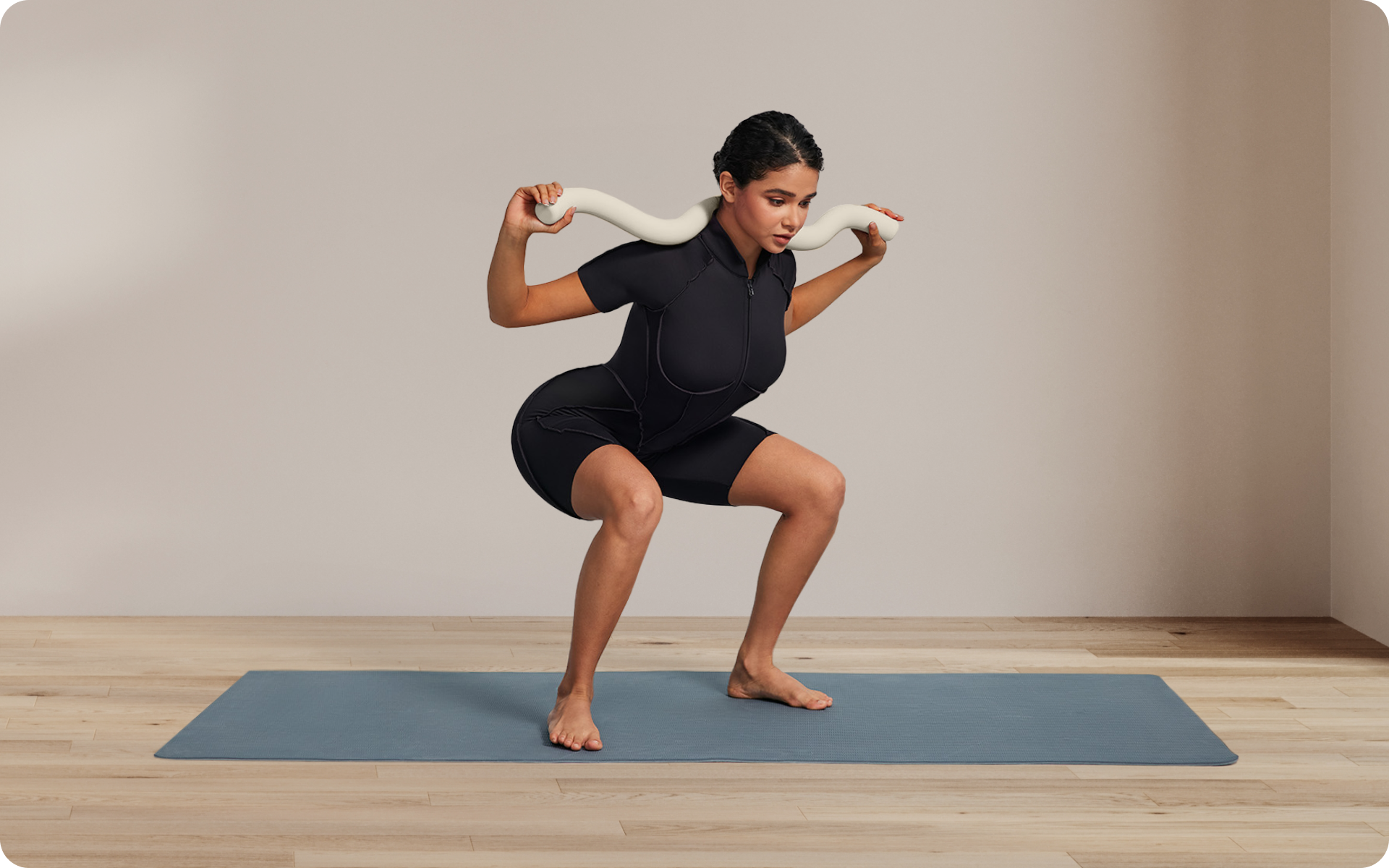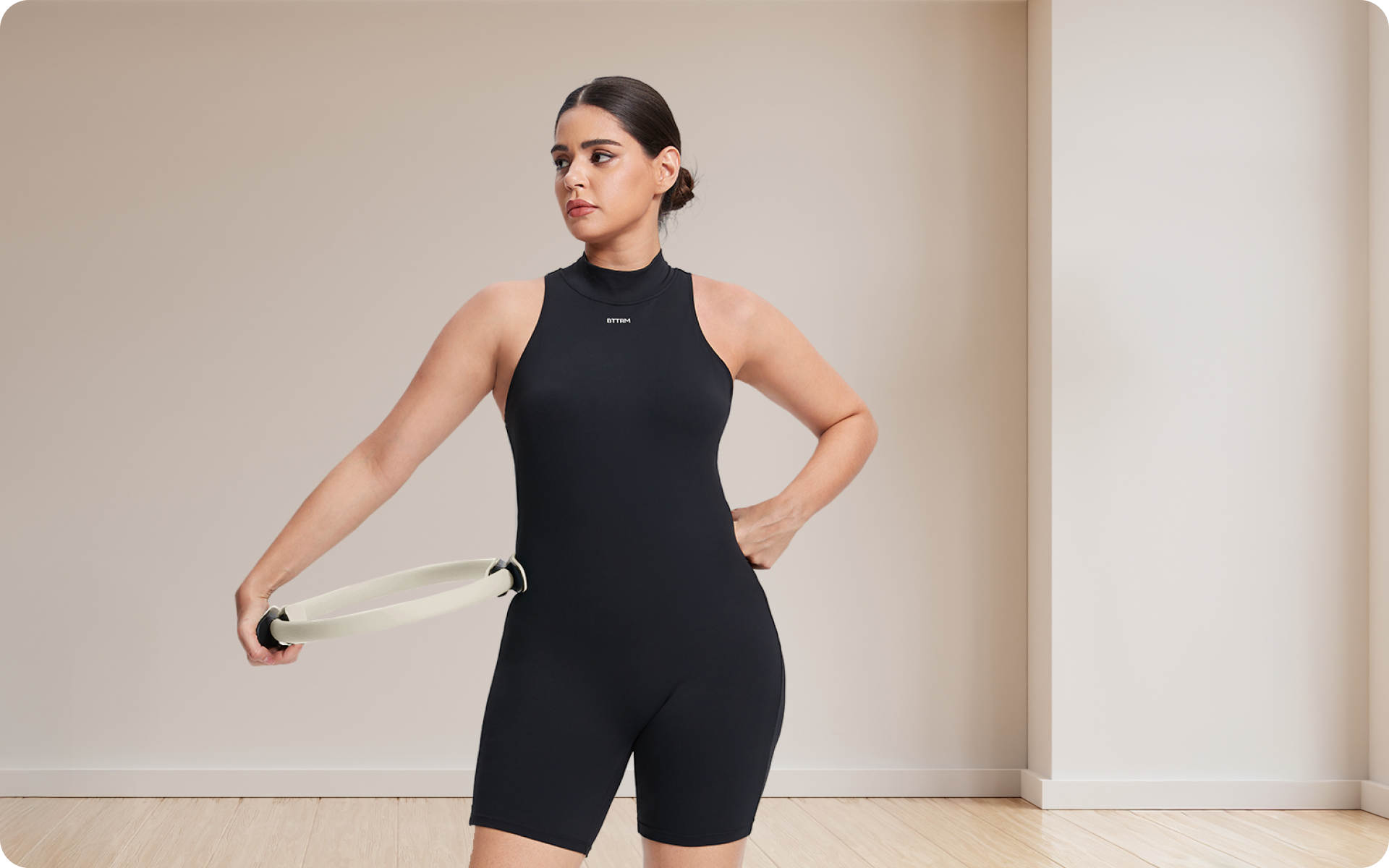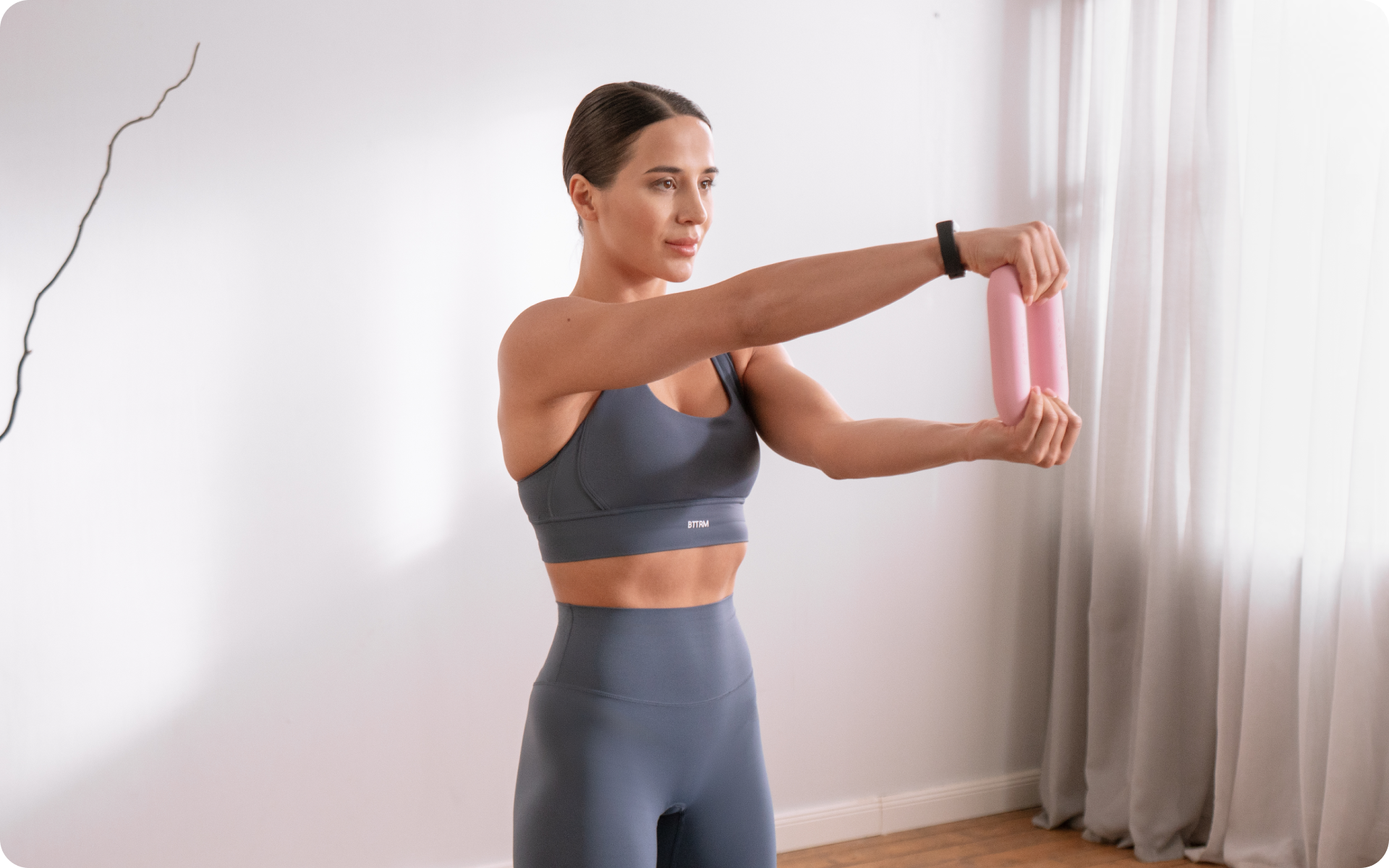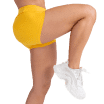If you’re looking for an efficient leg workout plan for beginners, you’ve come to the right place. This guide will focus on the best exercises that fire up your lower body muscles – one of the most important body parts, as they support and carry your upper body every day.
This energizing leg workout plan will also debunk the myth that home workouts can’t engage your leg muscles as much as gym sessions. On the contrary, you can get a productive, result-driven workout from your home space.
Training your legs makes daily movements, such as walking, running, lifting, and even climbing stairs, feel easier and more natural.
Without further ado, let’s cover the biggest questions about leg day in this review.
Why Are Leg Days So Much Harder?
Leg days may be harder for you because your lower body involves the largest muscles – quads, hamstrings, glutes, and calves. Training these muscles requires more energy, aka burns more calories. We’re also on our feet frequently throughout the day and all this time can add up and may lead to deep fatigue.
Compound movements, such as squats, lunges, or deadlifts, engage multiple muscles at once, which can feel more challenging compared to isolated upper-body exercises, such as bicep curls.
When it comes to home training, though, the situation may be a tad different – you’re allowed to move at your own pace, skip crowded gyms, and use lighter weights or only your body weight. You can focus on proper form, take as many breaks as you want, and increase the intensity gradually.
With consistent practice and progressive overload (adding weights, increasing reps and sets, trying more challenging variations, or increasing intensity), your legs will adapt. More brutal exercises will become manageable – you’ll notice improvements in your strength and endurance throughout your entire body and not just your legs.
Please note: not everyone finds leg day hard. Your fitness level, workout experience, and personal physiology play a role too. Some practitioners enjoy weighted leg workouts more than exercises that focus on the core or arms.
Can I Build Muscle with Only Leg Day?
It may be possible to build muscle with one leg day, but those gains are going to be mostly in your lower body.
To build a fully balanced and proportionate physique, you also need to train your upper-body muscles. If you skip upper-body workouts, your body can become less functional and unbalanced.
Furthermore, a recent 2023 study found that both weighted and bodyweight whole-body training could induce muscle hypertrophy in the thighs (2). Resistance training is a perfect activity to induce muscle hypertrophy (3), but it works best when you train different muscles in your entire body.
BetterMe: Health Coaching app helps you achieve your body goals with ease and efficiency by helping to choose proper meal plans and effective workouts. Start using our app and you will see good results in a short time.
Are 4 Exercises OK for Leg Day?
Yes, four exercises can be okay for beginners who are aiming to strengthen their legs. If these four moves hit the major muscle groups – quads, hamstrings, glutes, and calves – you can develop strength and improve lower-body stability.
Training volume (total number of sets and reps) and intensity (the level of effort and difficulty – extra weights and pace) are more important than variety and quantity.
As a beginner, start with four engaging exercises, do them correctly, and gradually increase the volume to strengthen your legs. When you nail the four exercises, you’ll naturally lean toward other movements that require your built-up strength and endurance. If you’re curious about high-intensity leg workouts, check out our earlier article.
Read more: Beginner Glute-Focused Workout Plan: 6 Exercises That Actually Work
What Is the Most Effective Leg Day Workout Plan?
Building a powerful leg day workout plan at home is quite easy; on your leg day, you need to hit all of the major muscle groups in your lower body:
- Quads (front of the thighs): Help extend your knee, which allows you to straighten your leg
- Hamstrings (back of the thighs): Control knee bending
- Glutes (butt): Essential for hip stability, strength, and whole-body power
- Calves (lower legs): Important for ankle stability and movement
- Adductors and abductors (inner and outer thighs): Stabilize your hips and guide leg movement from side to side.
Check out an example of a weighted leg day workout plan for beginners. Before you jump into it, make sure to do a dynamic warm-up session:
Warm-Up Routine
Good Morning:
- Stand with your feet hip-width apart and place your hands behind your ears.
- While keeping a slight bend in your knees, hinge forward from your hips, and push your butt back, lowering your torso.
- Press through your heels to drive your hips forward to lift your torso back up standing.
- Squeeze your glutes at the top before the next rep.
Inchworm:
- Stand tall with your feet hip-width apart and your arms at your sides.
- Hinge forward at your waist and place your hands on the mat.
- Walk your hands out until you’re in the high plank position. Hold briefly and move your hands back toward your feet and rise to stand.
- This is one rep.
Whether you’re a workout beast or just a beginner making your first foray into the world of fitness and dieting – BetterMe has a lot to offer to both newbies and experts! Install the app and experience the versatility first-hand!
Downward Dog to Lunge:
- Start on all fours with your hands directly under your shoulders and your knees under your hips.
- Lift your hip up and back, pressing your butt toward the ceiling to create a V shape with your body. Straighten your legs as comfortably as possible and gently press your heels toward the floor.
- Let your head relax between your arms, avoid arching your back – this is your downward dog.
- From here, step your right foot toward the outside of your right hand, lower into a runner’s lunge, and allow your hips to drop slightly.
- Pause and feel the stretch in your hips and thighs.
- Repeat on the left side.
Cat-Cow Stretch:
- Get on your fours with your shoulders stacked over your wrists.
- Inhale, then exhale, and round your spine one vertebra at a time. Draw your belly up your spine and let your head gently drop toward the floor. This is the cat pose.
- As you inhale, gently arch your back, lifting your chest and gaze toward the ceiling. This is the cow pose.
- Continue flowing.
Now you’re ready to train your legs. Here are 6 exercises for your leg day at home. Do each exercise for 8-10 reps. Repeat for a total of 3 sets. Rest for 30-40 seconds between each set.
Exercise #1: Goblet Squat
How to do it:
- Stand with your feet slightly wider than the width distance apart and your toes turned slightly outward.
- Hold a dumbbell vertically in front of your chest with both hands.
- Engage your core, keep your back straight as you push your hips back, bending your knees to lower into a squat.
- Press through your heels to return to standing. Squeeze your glutes at the top. That’s one rep.
Exercise #2: Lateral Lunge
How to do it:
- Stand with your feet hip-distance apart and your hands collapsed at your chest. Hold a dumbbell with both hands vertically.
- Take a big step out to the left, bending your knee as you hinge at the hips and shift your weight back into your heel. Lower in the lateral lunge, keeping your chest lifted and core tight.
- Push through your left heel to return to standing. This is one rep.
Exercise #3: Romanian Deadlift
How to do it:
- Stand with your feet hip-width apart, your knees slightly bent, and your arms relaxed in front of your thighs. Hold a dumbbell in each hand. This is your starting position.
- Hinge forward at the hips, keeping a soft bend in your knees, and push your hips back as you lower both dumbbells along your shins. Maintain a flat back and keep your core engaged.
- Stand tall, pressing through your heels, keeping the dumbbells close to your body as you lift.
- At the top, squeeze your glutes before lowering back down for the next rep.
Exercise #4: Side-Lying Leg Lift
How to do it:
- Lie on your left side with both legs extended and stacked. Support your head with your left hand, keeping your core engaged.
- Place a dumbbell on your top leg to add intensity. Lift your top leg to 45 degrees, pause for a second, and slowly lower back with control. This is one rep.
Exercise #5: Isometric Plié Squat with Alternating Heel Raise
How to do it:
- Stand with your feet wider than your hips and your toes slightly turned out.
- Bend your knees and drop into a wide squat, keeping your hips tucked under (avoid sticking your butt out). Your toes and knees should be turned out. This is the starting position.
- Lift your left heel off the floor, keeping your hips steady and core engaged.
- Lower your left heel to the floor, and lift your right heel off the floor.
- Continue to alternate heel lifts.
Exercise #6: Single-Leg Glute Bridge
How to do it:
- Lie on your back with your knees bent and your heels a few inches away from your butt.
- Lift your left foot and extend your leg straight so your knees are in line with one another.
- For extra intensity, you can hold a dumbbell on the thigh of your planted leg.
- Engage your glutes and lift your hips, pushing off your right foot.
- Return your hips to the floor, keeping your left leg lifted. This is 1 rep.
In What Order Should I Train My Legs?
The best leg workout for mass and strength should start with compound exercises that use different muscle groups, such as lunges, squats, or deadlifts.
These moves will help you build strength and power. Next, move to isolation exercises, such as single-leg calf raises or single-leg curls, that target specific muscles, improve balance, and definition.
Finish your workout with single-leg exercises or stretches to promote control and flexibility. The sample of this order was mentioned in the previous section. Use it for your home-based leg training routine.
Read more: Beginner Mat Pilates Leg Workout For Strong, Toned Legs
Do Your Legs Grow Better with High Reps?
A study suggested that groups with higher training volume without failure showed similar or better hypertrophy gains than failure groups (4).
Generally, instead of focusing on the higher number of reps, you should prioritize proper form and gradually increase your training load for awesome results. For more details about benefits of leg workouts, take a look at our prior publication.
How Often Should You Do Leg Day?
Training frequency is up to you. If you have enough time, working out your legs at least twice a week will be enough. This will give your leg muscles enough challenge to grow stronger while leaving time to recover.
If you haven’t trained before, start with one weighted leg workout per week. Exercises you’ve learned from this review will fit you just perfectly – they contain both compound and isolation moves. Remember: quality (proper form and technique), not quantity, often wins.
There’s no need to push yourself to advanced, high-volume sessions before you’ve built enough strength and stability – this is how you get injured. It’s best to master the fundamentals before you move on to more advanced variations of exercises.
Seven exercises for the leg day workout aren’t too much, particularly when you’re used to lower-body training. If you’re a newbie, 7 exercises may be okay for you as well – you can try all the exercises with a smaller volume (instead of three sets, do two). Therefore, the answer will depend on your fitness level and the goals of your training – while one person may feel comfortable doing 7 exercises, others may find it too difficult. Legs can be difficult to grow because they contain the largest muscles in the body, which require more effort to increase leg mass. Building leg muscles takes consistent overload, proper nutrition, and basic recovery. If you hit 100 squats a day as a beginner, you’ll likely start to feel your legs getting stronger and more toned. However, it’s not a truly effective way to grow your legs because your body eventually adapts to 100 squats. Instead, tackle your training with the principles of progressive overload in mind. Try to increase your resistance, repetitions, sets, or intensity each time you exercise. But also remember that with weighted exercises, you need to make sure that you don’t forget about recovery time – your proven way to build strength and gain muscle. You can do both. Slow and fast squats are effective, depending on your goals. Slow squats improve form, increase tension, and reduce your risk of injury, particularly when you’re using weights. Faster squats build power and balance. Mix both tempos in your routine to enhance your athletic performance and build strength. Frequently Asked Questions
Are 7 exercises too much for leg day?
Are legs the hardest muscle to grow?
Will my legs grow if I do 100 squats a day?
Is it better to do squats fast or slow?
The Bottom Line
This energizing leg workout plan fitness experts are turning to will perfectly fit into your weekly schedule. It involves compound and isolated exercises that enhance strength and balance.
The best part is that you can do them from home with dumbbells or weighted alternatives.
Beginners may benefit from doing one to two leg sessions per week, gradually shifting to advanced exercises.
DISCLAIMER:
This article is intended for general informational purposes only and does not serve to address individual circumstances. It is not a substitute for professional advice or help and should not be relied on for making any kind of decision-making. Any action taken as a direct or indirect result of the information in this article is entirely at your own risk and is your sole responsibility.
BetterMe, its content staff, and its medical advisors accept no responsibility for inaccuracies, errors, misstatements, inconsistencies, or omissions and specifically disclaim any liability, loss or risk, personal, professional or otherwise, which may be incurred as a consequence, directly or indirectly, of the use and/or application of any content.
You should always seek the advice of your physician or other qualified health provider with any questions you may have regarding a medical condition or your specific situation. Never disregard professional medical advice or delay seeking it because of BetterMe content. If you suspect or think you may have a medical emergency, call your doctor.
SOURCES:
- Legs and trunk muscle hypertrophy following walk training with restricted leg muscle blood flow (2011, pubmed.ncbi.nlm.nih.gov)
- Effects of free weight and body mass-based resistance training on thigh muscle size, strength and intramuscular fat in healthy young and middle-aged individuals (2023, physoc.onlinelibrary.wiley.com)
- Optimizing Resistance Training Technique to Maximize Muscle Hypertrophy: A Narrative Review (2023, mdpi.com)
- Is Resistance Training to Muscular Failure Necessary? (2016, pmc.ncbi.nlm.nih.gov)
